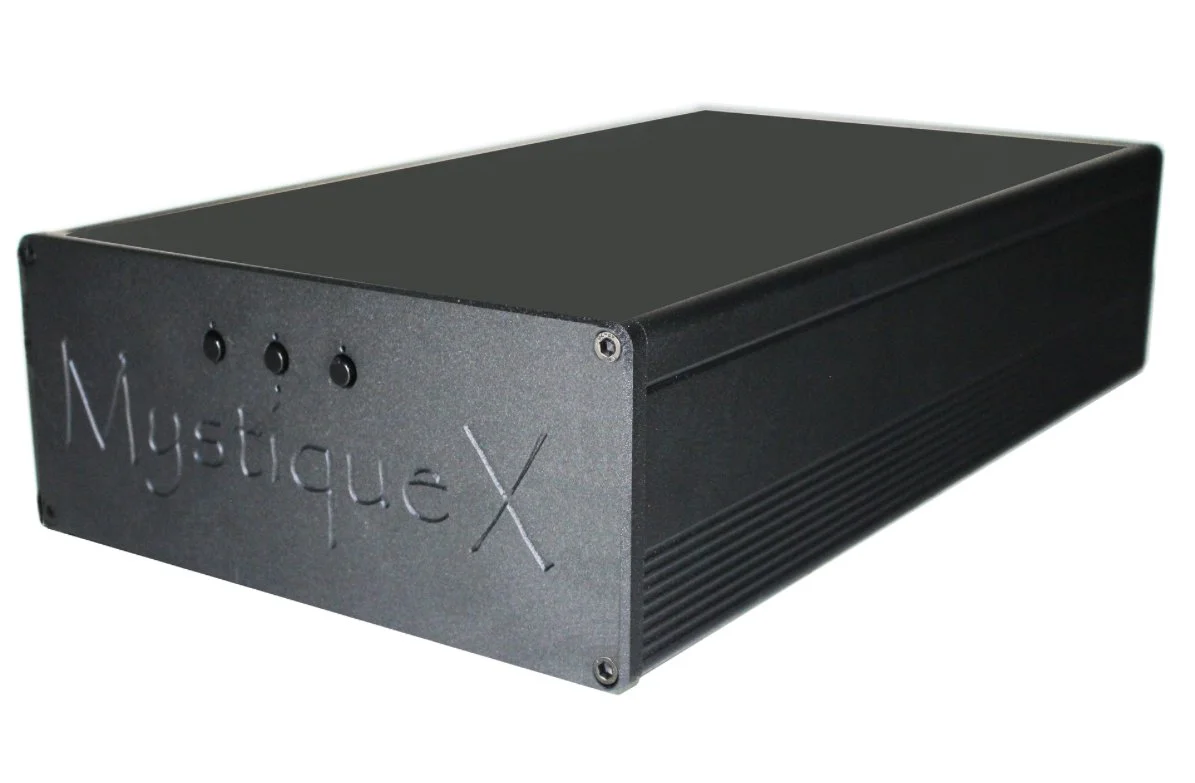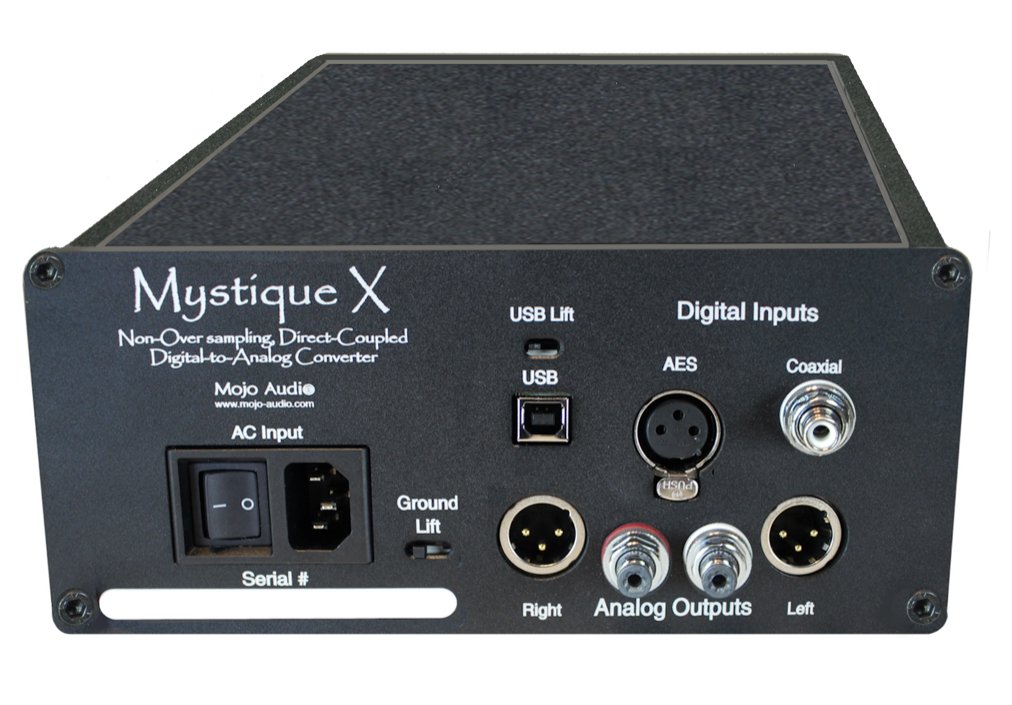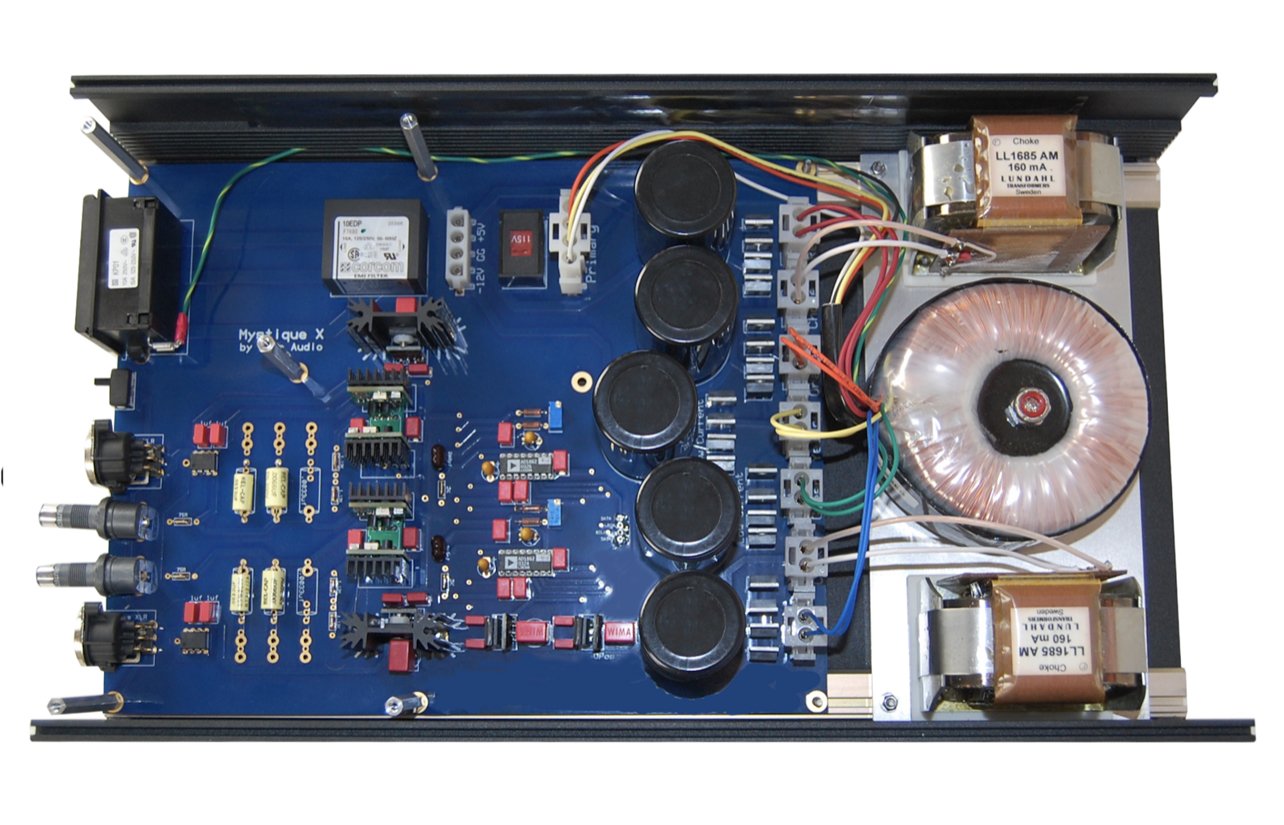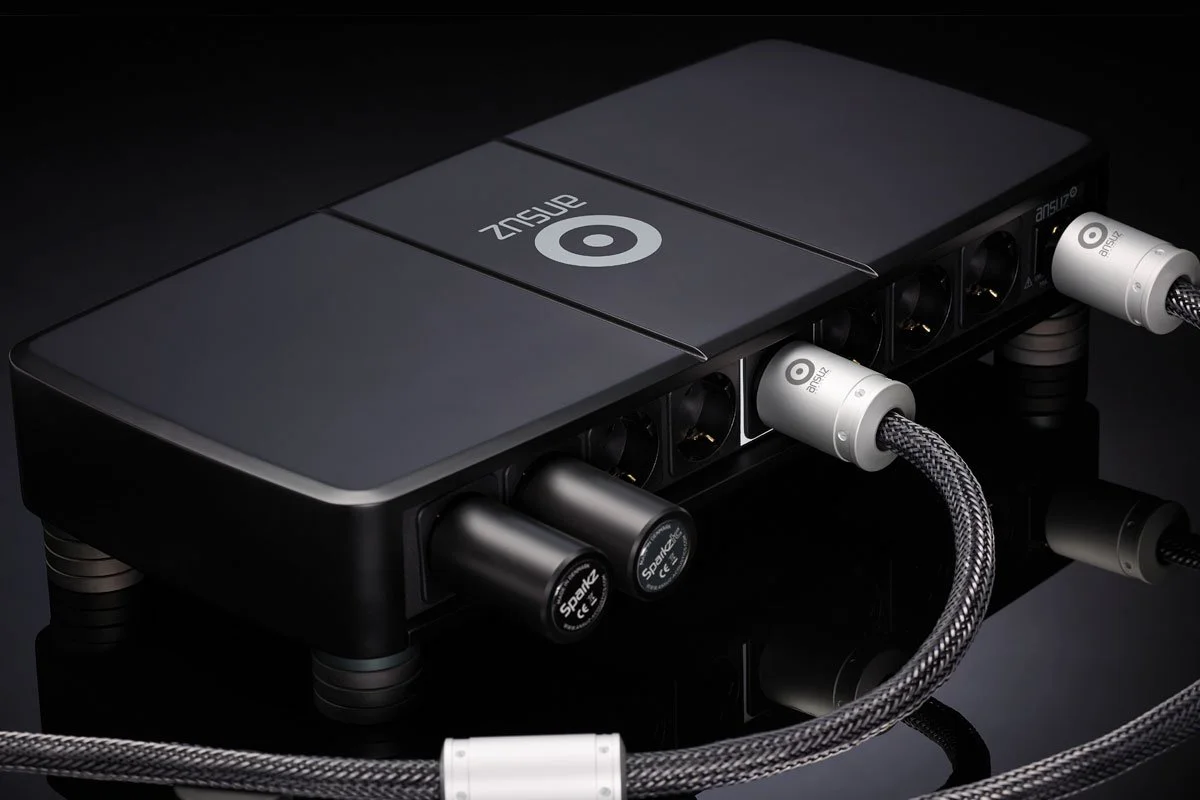Mojo Audio Mystique X SE DAC
During July and August 2022, much of the world was confronted with a heat wave of the highest order. How timely it was I re-discovered Holly Cole’s diverting, and original arrangement of “Heat Wave” (composed in 1933 by Irving Berlin), from her 2003 album Shade, (16/44.1 on Qobuz). The sound quality was super, with her addictive (and playful at times) sultry voice, and so tasteful and talented accompanying musicians (drums/percussion, bass, even flute). It sounded more convincing and detailed than I recalled and contained dead quiets and subtle accoutrements both in voice and else that I also did not recognize; the lyrics (sometimes cleverly modified by Cole) include:
A heat wave blew into town last week
Came from the Isle of Martinique
We're having a heat wave, uh-huh
A tropical heat wave
(That's right)
The temperature's rising, yet it isn't surprising
You certainly can, you certainly can
Can, can
So hot
It's so hot
It's so hot
Yes, it is `hot’ (as I am writing this in mid-late August), but so is the DAC I used in my audio system for listening to it: the new Mojo Audio Mystique X SE DAC at $10,000; the top-of-the-line of their new “X” series of the Mystique, and the centrepiece of this review.
Many thanks to Benjamin Zwickel, Owner of Mojo Audio, for sending me the unit for review (already burned in). The basic X unit, which, by adding in the various optional upgrades, becomes the X SE. The X series replaces the EVO series; the EVO top-of-the-line is the Evo Pro. It has been my reference DAC for over two years now. It won me over for its uncanny musical, convincing, and natural sound quality.
The X series uses the same traditional/pure AD1862 R-2R chipset used in the EVO, to accomplish what Mojo Audio strives for: ultra-purist non-oversampling direct-coupled R-2R topology. With no pre or post-digital filtering, digital noise shaping, upsampling, oversampling, or error-correcting algorithms.
[Note: the X-series does not support DSD or MQA; nor did the EVO. Conversion to PCM can be handled easily and effectively using external software; Roon Labs, for example, offers both of these options.]
But the X series completely redesigns the size/weight of the unit. Remarkably, the new X series is about half the width and 10 pounds lighter than the EVO.
The new unit (only in black metal) still looks unobtrusive and inert, with the same simple layout/options in front and back as the EVO. On the front, there are 3 small buttons for choosing from three input sources (from Left to Right); AES (L), USB (M), Coaxial (R)); pushing a button engages only that source and turns on its small blue light above it. I used the USB for my music server (with a Roon Core), and the Coaxial for my CD transport. There is no remote control. [Note: For streaming: USB only (from (ethernet-connected) music player/server to DAC). When using Roon, set up a zone by choosing “JLsounds Hi-Rez Audio 2.0"; give it a name if you wish.]
On the back, there is a power switch (best kept on 24/7), AC input for a power cord, two analog pair-out choices to a preamp (XLR/RCA), and even a ground lift switch (engaged by sliding it left).
From a practical perspective, the smaller width allows one to place it on a shelf, while still having considerable room for other devices/peripherals. I found myself using the extra side space by placing the unit in the middle of a shelf and then at a whim storing things on either side when needed, such as a pair of headphones, my preamp remote control, or some CDs.
But importantly, as I will expand upon later in this article, the X SE has significantly raised the sound quality, particularly due to the new lower noise floor.
How the designs differ between the EVO and the X
According to Zwickel:
Our goal in designing the new Mystique X series was to create a smaller, lighter, higher-value, version of our DAC, which could be sold through a network of retail distributors. The X shares identical circuits and nearly identical parts to the EVO, and both have chokes in the analog power supplies. But to lower cost, size, and weight, we eliminated the three chokes used in the digital power supplies and we reduced the number of Belleson ultra-dynamic ultralow-noise discrete regulators from 16 down to 9.
We also made some improvements to the power supplies, such as upgrading from fast-recovery diodes to Schottky zero-recovery diodes, designing an ultralow-noise multi-voltage custom toroidal power transformer, and upgrading to 100% decoupling film capacitors at all analog consumers.
As for the chassis, the X stands for “extruded chassis”. To lower mechanical resonance we built our Mystique X around an extremely thick cross-section rounded rectangular extrusion. To lower mechanical resonance, even more, we used a series of custom die-cut anti-resonance pads between the transformers, chokes, circuit boards, and the chassis, as well as utilizing the same anti-resonance technology that was developed by the US Navy to lower noise in submarines.
The (unexpected) net result of all these changes was lowering the noise floor by 5dB; the lowest noise floor we’ve ever had in a DAC. And when you lower the noise floor by 5dB you not only reveal low-level details that were formerly obscured, but you also increase the dynamic range by 5dB.
So whereas we were hoping the X would come close to the performance of our current reference EVO Pro DAC, ironically, it exceeded our expectations. It is the best-sounding and most dynamic DAC we’ve ever manufactured.
From the X to the $10,000 X SE, what upgrades can get you there?
There are four (4) optional upgrades to the Mystique X which together yield the X SE:
Power Supply Upgrade ($500), Analog PSU Choke Upgrade ($1500), S/PDIF Input Upgrade ($500), Anti-resonance + Shielding Upgrade ($500). When buying a new unit, you simply choose the options that you want to be included.
Some examples of the sound quality
[Reference Equipment: Mojo Audio Deja-Vu Music Server, PS Audio BHK Signature Preamplifier, Audio by Van Alstine DVA 600 Mono Block Amplifiers, Jay’s Audio CDT3-MK3 CD Transport, Speakers: Alta Audio Celesta FRM-2M, and the new Alta Audio Adam Floorstanding (review forthcoming); cabling by Wireworld Cable Technology, Audio Art Cable.]
The good news is that the Mojo Audio Mystique X SE has the same, unusually compelling, sonic character as the EVO Pro; “It demonstrates a rare cohesion of all the best individual audiophile qualities”, as I stated in my EVO Pro review. The better-than-good news, however, is that because (presumably) of the lower noise floor (and the 5dB increase in dynamic range), there are now treasures of new low-level details exposed in recordings that I did not hear at all before, or notice before so strongly, resulting in a more natural—and sometimes surprising—musical experience. I give several examples next.
Fazil Say performing (solo piano) Variations of Mozart, “Ah vous dirai-je maman” K. 265:
I can now hear Say humming on Variations 9-12 while he plays piano, even coughing. I have never heard that before! When I first heard it, I noticed that my front apartment window was open, facing a park and playground, and I assumed that the humming emanated from there.
But after shutting the window it persisted; it was coming from the music—however subtle.
And this is just a 16/44.1 file. I used the CD with a transport, streaming a ripped version of the CD, as well as streaming the piece from Qobuz, all with the same result. Very impressive; it adds a bit more humanity to my very favourite performance of that Mozart piece.
Cécile McLorin Salvant, Ghost Song, Track 1, “Wuthering Heights” (2022, 24/96 Qobuz) (originally written by Kate Bush in the 1970s). I have raved about her performances and recordings before (she is a unique young talent); but I now heard something new to me, at first baffling: The recording starts in a church, and before Salvant even sings I could hear a prominent low pitched airy/white noise in the background—which I had never noticed being so strong before. It continues when Salvant begins to sing (her voice is truly exotic and fascinating, with the church venue reflections chiming in beautifully). Confused at first, I quickly dismissed my system from causing distortion, and instead reached back in my memory to Cantate Domino, Oscar’s Motet Choir, “Maria Wiegenlied” (Mary’s Lullaby), also recorded in a church, where one can hear (in the beginning and end) the air flowing in the church organ pipes used. I stopped the recording and quickly put on Cantate Domino; the sound emanating was very similar. Continuing then back with the Salvant recording, there indeed is a church pipe organ playing on Track 6, “I lost my Mind” (but no mention of that being on Track 1). I suppose (assuming I am correct about the pipe air sound) it had been warming up by the organist in the background getting ready (even if it never played in this piece); my guess is that it was done on purpose: It certainly gives the impression of a (spooky) ghost! In any case, the album is a gem, both the performance and the recording quality; the X SE brought it out to a truly new visceral level of enjoyment.
Enya. “The Humming”, from her most recent album (2015), Dark Sky Island.
The added dynamic range of the X SE allows this piece to flourish. From dead silence to Enya humming away with perseverance and mysticism, and pounding drums. This is now a peaceful pleasure/treasure for me and my family. The song apparently was motivated by the sound of the early universe that was made audible (to humans) from modified recordings (from the Planck Space Telescope) and sounds like human humming; Enya’s purpose is to give us her take on the profoundness of how things evolved after the Big Bang. Listening to this seemed timely given the various releases this summer 2022 from NASA of remarkable photos of early galaxies, and even sounds from a black hole.
Summary
With a significantly smaller size and weight, and a significant increase in sound quality that reveals hidden gems even in 16/44.1 files, while retaining the unique and special sound quality of Mojo Audio’s Mystique DACS, the Mojo Audio Mystique X SE is a gem itself; it is addictive. A must-hear DAC.
Further information: Mojo Audio







